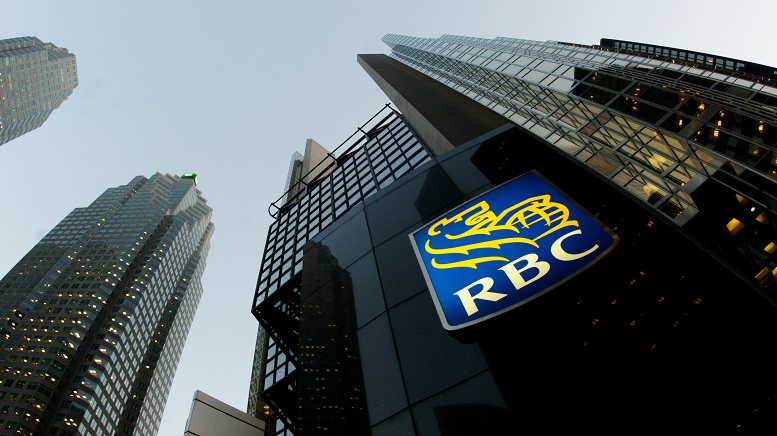Royal Bank of Canada (TSX:RY)(NYSE:RY), Toronto-Dominion Bank (TSX:TD)(NYSE:TD) and Canadian Imperial Bank of Commerce (TSX:CM)(NYSE:CM) reported diverging second-quarter performance on Thursday, with the first two beating expectations while the latter fell short, all largely due to provisions for credit losses (PCL).
All three banks posted continued loan growth, with strength in mortgage lending and a recovery in business lending.
Strong loan and fee portfolios have continued to provide tailwinds for Canadian banks on the back of economic growth, but these banks are also seeing increased spending due to tight labor markets and inflation, which is eroding some of these advantages. PCLs are also starting to climb as they prepare for economic uncertainties.
Here’s a summary of RBC, TD Bank and CIBC’s Q2 financial results.
Royal Bank of Canada
Royal Bank, Canada’s largest lender, reported higher profit in the three months that ended April 30 from a year earlier, and beat estimates. The bank has reduced its provisions due to the reduction in risks linked to the pandemic, in addition to recording strong loan growth.
Excluding the impact of taxes and the $342 million in loan loss provision reversals, profits fell 2% to $5 billion, as lower revenue from its capital markets business offset strength in wealth management and lending.
The net profit of the largest Canadian bank was $4.3 billion for the second quarter, up 6% compared to the same period in 2021.
Excluding exceptional items, earnings per share came to $2.96, up 7% from the second quarter of 2021 and above the average analyst forecast ($2.69).
However, challenges in Royal Bank’s financial markets weighed on revenue, which fell 3%, even as its expenses excluding variable compensation rose by 7%.
RBC CEO Dave McKay said, “The resilience of our diversified business model, prudent risk and capital management, and strategic investments in talent and technology continued to define our performance in the second quarter”.
The bank recorded a $326 million (+17%) rise in net income from personal and commercial banking to $2.2 billion, mainly due to lower provision for credit losses.
The wealth management business was up 10%, primarily due to an increase in average client fee services assets and was driven by volume growth. The insurance sector managed to jump 10% as well.
Capital Markets’ net profit was down $276 million, or 26%, from the same period a year ago.
The Toronto bank also announced an increase of $0.08 (+7%) per common share in its dividend, which is now set at $1.28 per share.
TD Bank
TD Bank Group’s net income increased in the second quarter and beat expectations, benefiting from the strength of its Canadian retail operations, which made it possible to offset an increase in expenses and provisions for bad debts.
Net income went from $3.695 billion, or $1.99 per diluted share, to $3.811 billion, or $2.07 per diluted share.
As for adjusted net income, it fell during the same period from $3.775 billion, or $2.04 per adjusted share, to $3.714 billion, or $2.02 per adjusted share.
TD took provisions of C$27 million, compared to the C$237 million expected. Excluding the impact of this, its adjusted profit was nearly 11% higher than a year earlier.
The Canadian Retail segment’s net income was $2.236 billion, up 2% from the second quarter last year, while the US Retail net income was $1.367 billion, an increase of 4%.
While TD reported an increase in adjusted expenses of 5% year-over-year, revenue rose 8% on higher loan volumes and fees.
Bharat Masrani, Group President and CEO of TD Bank Group, says he has seen strong revenue growth across the institution’s businesses. He says TD will continue to invest in technology and innovation to shape the future of banking.
In addition, TD Bank Group announced a dividend of $0.89 per common share for the quarter, ending July 31.
Canadian Imperial Bank of Commerce
CIBC’s profit fell and missed estimates mostly due to higher bad debt provisions and expenses as well as a decline in its investment banking revenue.
CIBC reported Thursday that adjusted net income for the second quarter fell to $1.65 billion, or $1.77 per diluted share, from $1.67 billion, or $1.79 per share, a year earlier.
Total revenue for the quarter ended April 30 was $5.38 billion.
CIBC’s earnings drop was largely attributable to an 847% increase in PCL to C$303 million, due to its acquisition of the Canadian Costco credit card portfolio, as well as higher spending.
The bank said earnings were impacted by $0.15 per share due to $106 million in integration costs for the acquisition of Canadian company Costco’s credit card portfolio. This led to an increase of $45 million in legal provisions and $24 million for amortization of acquisition-related intangible assets.
Excluding taxes and provisions, however, adjusted profit rose 7% year-on-year as interest and fee income rose.
The bank’s Canadian retail and business banking vertical reported net income of $496 million for the second quarter, down 18% from a year earlier, primarily due to a higher provision for credit losses and higher expenses.
Commercial Group and Wealth Management’s net income in Canada rose 20% to $480 million, however Commercial Group and Wealth Management’s net income in the United States dropped from $216 million to $180 million.
CIBC’s adjusted expense growth of 11% outpaced a revenue increase of 9%. Its capital markets business also faced challenges, although this was driven more by lower investment banking fees as transactions remained strong.
CIBC’s second-quarter provision for credit losses was $303 million, up $271 million from the same quarter last year, while the Tier 1 capital ratio 1 fell to 11.7% from 12.4% a year earlier. Adjusted return on equity fell to 15.2% from 17.3%.
The bank announced an increase in its quarterly common stock dividend from $0.805 per share to $0.830 per share for the quarter ending July 31.
Year-to-date, RBC stock is down 6%, TD stock has fallen by 3%, and CIBC stock has dipped by 7.5%.
Featured Image: Megapixl © Beaustock







